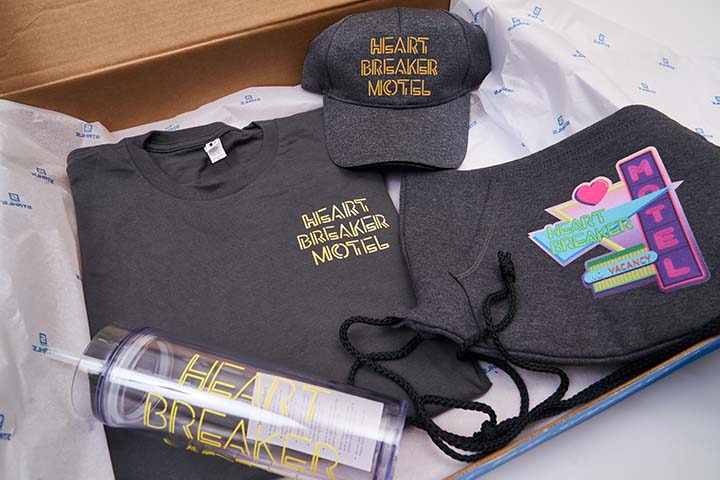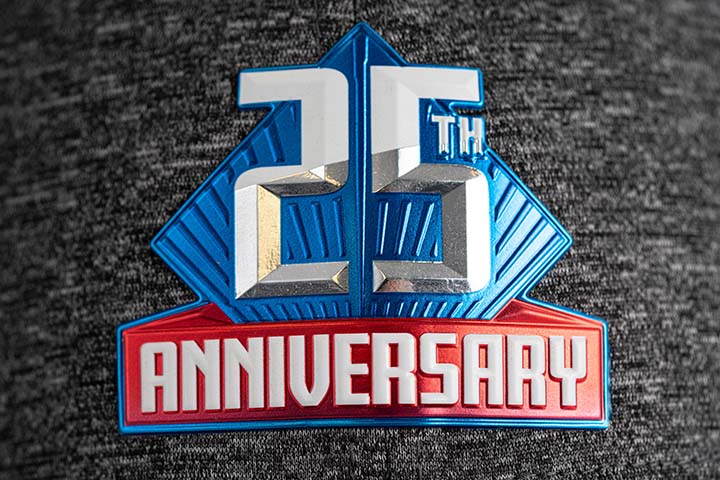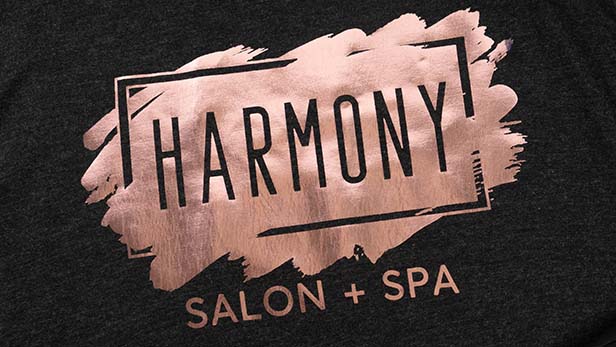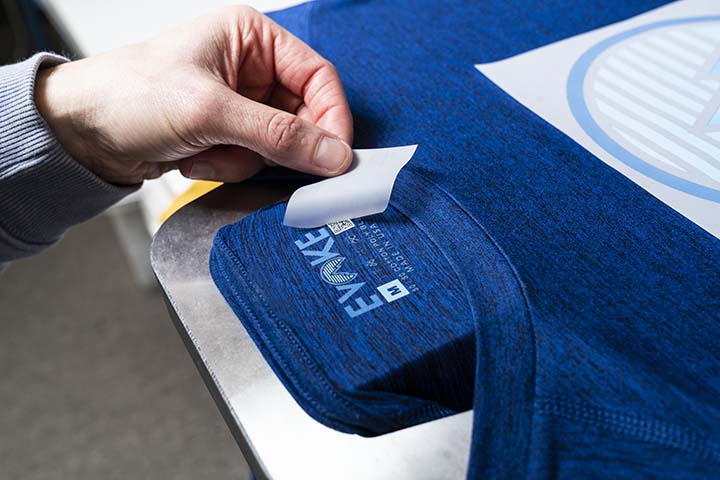July 08, 2022
Elevate Your Apparel With These 4 Heat Transfer Trends
Whether it’s a vibrant direct-to-film transfer or a fun color-changing vinyl, there are so many options for creating memorable branding moments with heat transfer decoration.
Heat printing provides distributors and decorators with the attractive combination of being both easy to master and offering a variety of options – from full-color screen-printed or digital transfers to vinyl in an array of colors and finishes. Many patches and emblems also can be applied using heat and/or pressure. Consider these four hot trends as you’re developing your next promotion for clients.
1. Simplify decoration with direct-to-film transfer.

Direct-to-film transfers let distributors and decorators easily bundle a variety of logoed items.
Growth in direct-to-film has been explosive this year, beginning with Stahls’ (asi/88984) launching its UltraColor MAX product at ASI Orlando in January. “This product is a game-changer for promo distributors and decorators,” says Josh Ellsworth, executive vice president of sales and marketing. “They can take a full-color and fine-detail logo and bring it to life without an outline or scorching.”
Distributors can easily become a one-stop solution for their clients, thanks to the versatility and efficiency of direct-to-film transfers. “Being able to just say ‘yes’ to a logo without adding complexity to the conversation is key to winning deals,” Ellsworth adds.
Direct-to-film transfers can be applied to a variety of surfaces: over the seam on caps, on the pouch or strap of a bag, on the hood of a jacket, or on a T-shirt, umbrella, blanket or performance polo. “We’re seeing customers kit multiple items together with the same logo to increase their average order value,” Ellsworth says. “With the right heat press, or right decorator, distributors are able to confidently sell a wide assortment of products.”
2. Add some dimension to your logos.

Textural emblems add to the perceived value of a promotional product.
Patches and emblems are a popular choice to add a 3-D, textural look to promotional products and apparel. Decorating caps and other headwear with patches continues to be trendy. However, there are plenty of other product categories that can be elevated by adding an emblem, including bags, coats, padfolios and various hard goods. Patches can be a great choice for live, decorate-on-demand events and “hot market jobs,” thanks to the availability of lower minimums and quicker turn times, according to Ellsworth.
Another thing to consider is that not all patches and emblems require a heat application, which opens up new possibilities. “We’ve seen the promo item be the patch itself,” Ellsworth says. “Clients can hand out their logo at a relatively low cost for consumer application onto a water bottle, cell phone case, notebook and more.”
3. Try out some special effects.

Metallic heat transfer vinyl can turn a simple one-color design into something special.
The variety of colors, finishes and effects available with heat transfer vinyl allows distributors and decorators to get creative. Consider producing a limited-edition version of a client’s logo by rendering it in glitter or metallic vinyl. The idea also works well for brand anniversaries and special celebrations.
For summer, color-changing vinyl adds a fun, interactive element to designs. A T-shirt for a campground could be decorated with a glow-in-the-dark design. Or a pair of beach-ready slides could be offset with a UV-reactive logo that changes from white to blue, magenta, violet or yellow when it’s exposed to sunlight.
When considering a specialty vinyl, remember that less is often more. Simple designs and one- or two-color logos are your best bets for special-effects vinyl, Ellsworth advises.
4. Get creative with logo placement.

Consider adding secondary branding elements to a garment – whether it’s a custom neck label or a discreet icon on a shirt hem.
The tried-and-true left-chest logos will always have a place near and dear to our heart – and not just literally. However, there are so many options for increasing brand visibility in creative and unexpected ways, whether it’s a secondary branding element on the back of the neck or the hem of a shirt – or as part of a custom tagless neck label. Ellsworth gives the example of adding extra brand placement to the inside waistband of shorts. “If your target demographic wears the item with the waistband flipped out, as is trending, then why not add brand visibility here?”
